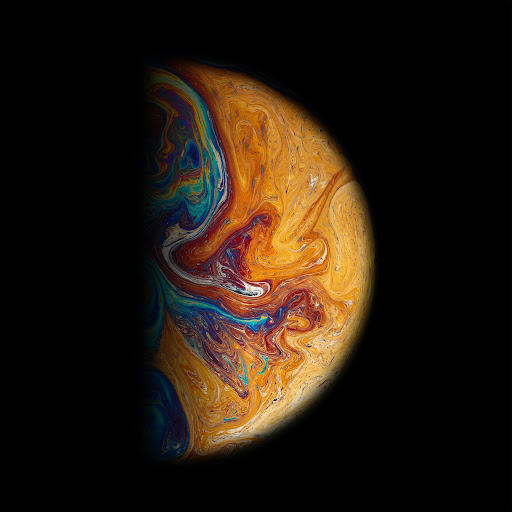
Venus is the second planet from the Sun and one of earth’s neighbors. No planet approaches closer to Earth than Venus. The planet is always roughly in the same direction in the sky as the Sun and can be seen in the hours near sunrise or sunset. Venus along with Mercury, Mars, Jupiter, and Saturn were the few planets known in ancient times. Venus was known in ancient Greece by two different names Phosphorus when it appeared as a morning star, and Hesperus when it appeared as an evening star. The modern name comes from the Roman goddess of love and beauty. The ancient Greeks equivalent referred to the planet as Aphrodite. Venus has been called Earth’s twin.
Long Hot Days on Venus
Venus orbits in a nearly perfect circle. One year on Venus is 225 Earth days. One day on Venus is longer than one year: One day is roughly 243 Earth days.This is the slowest rotation of any planet. At the equator, Venus is rotating at about 6.5 kilometers in an hour, or 4 miles in an hour. Venus doesn’t have any moons or ring systems and its magnetosphere is weak due to its slow rotation. Venus may be called Earth’s twin but from Earth it can be seen in cycles of waxing and waning, like the Moon but on a slower timeframe.
Why is Venus called Earth’s Twin?
If we could slice Venus and Earth in half and place them side by side, they would look pretty similar. Each planet has an iron core, hot-rock mantle, and rocky exterior crust. Even though Venus has a similar-sized iron core, the planet does not have its own magnetic field. Instead, Venus has a magnetic field created by the interaction of the Sun and the planet’s outer atmosphere.The similarities in their masses, and sizes, along with their relative locations in the solar system leave some astronomers to believe the planets could have started out much the same way. Early observations of the planet revealed a perpetual veil of clouds, leading to belief Venus was a warm, wet world, similar to Earth during its prehistoric age. Venus has mountains, valleys, and tens of thousands of volcanoes. The highest mountain on Venus is called Maxwell Montes and stands 20,000 feet high.
Could Venus Sustain Life?
Atmospheric pressure on Venus is believed to be similar to the deep sea on Earth. Venus is the hottest planet in our solar system. The average surface temperature is hot enough to melt lead. Venus does not tilt on its axis so there is no seasonal variation. The dense atmosphere of around 96.5 percent carbon dioxide traps heat and causes a greenhouse effect. The current conditions would not be conducive to life as we know it. However, that has not stopped us from visiting.
Venus is one the most “visited” places of the solar system, many spacecraft explored venus. Scientists wonder if the conditions of Venus could teach important lessons about the cause of environmental change on Earth. Venus and earth could have started so similar, which leads to the question: what will Earth be like millions of years from now? Could Venus give us those answers? Venus is not one of the only things people on Earth have visited often. What about things we can see from earth, and the moon that orbits us? Find out in the next installment of Five minute Planetarium.
Written by: Erinn Malloy
